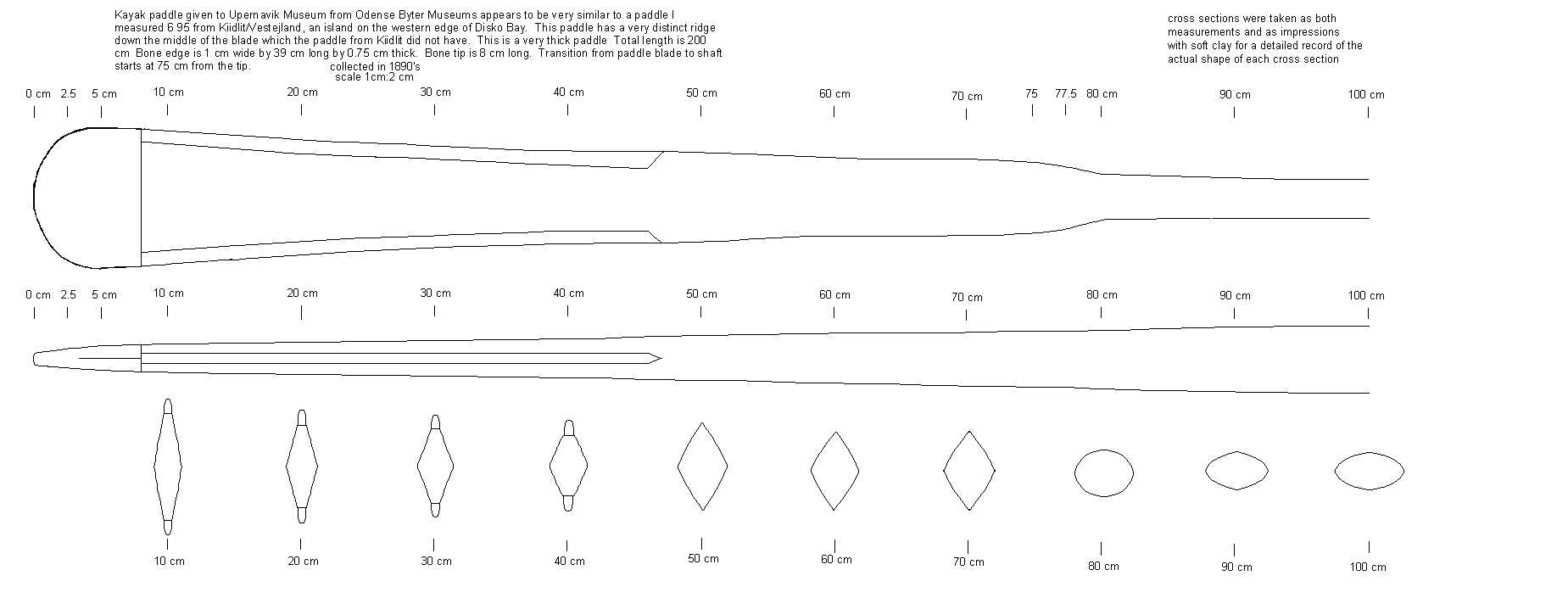
Here is a GIF version of the image, better suited for printing out.
Image size: 1849x705 pixels.
Kayak paddle collected in 1890's given to Upernavik Museum from Odense Byter Museums appears to be
very similar to a paddle Gail Ferris measured June 1995 from Kiidlit/Vestejland, an Island
on the western edge of Disko Bay.
This paddle has a very distinct ridge down the middle of the blade which the paddle from Kiidlit did not have.
This is a very thick paddle.
Overall length: 200cm
Bone edge is 1cm wideby 39cm long by 0.75cm thick.
Bone tip is 8cm long
ransition from paddle blade to the shaft starts at 75cm from the tip.
You asked me why the diamond shape in Nathanial Jensens paddle affects the wake vortex configuration by splitting them. Well Nikolaj Jensen and I both agreed that the annoying thing about a flat faced paddle is that the paddle chatters or wavers up and down in the water during heavy acceleration. And so to eliminate this is to make the paddle blade face diamond shaped.
I think the best way to discribe the effect of a diamond shaped paddle blade face is that it causes wake separation sufficient during start-up acceleration to eliminate the combining of the wake from the power face and back face from generating perceptible wake drag. The wake generated on the power face is divided into two simultaneous wakes one on the top and one on the bottom of the face instead of one alternately coming off the top and then again off the bottom.
Also I think if you look closely at the unusual shape of both the Odense and most particularly the Kitdit paddle you will see that there is a highly exaggerated roundness at the 40 and 60 cm. sections where the wood junctions with the bone edge of the paddle forming a concave area at the juncture of the bone with the wood. I noticed this very extreme juncture area and wondered why it was so rounded up rather than delicately flattened to a nice gentle integrated line with the bone and wood melling together with no concavity rather a gentle sloping shape.
Gail E. Ferris
October 18, 1998
Contributors to this page: Thomas Yost (TDY), Patrick Poirier (PPR), Gerald Maroske (GUM) and Hendrik Maroske (HHM)




